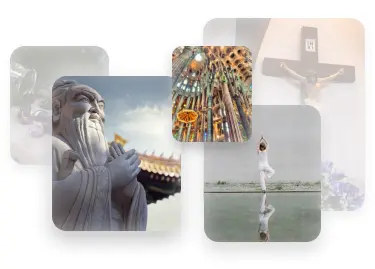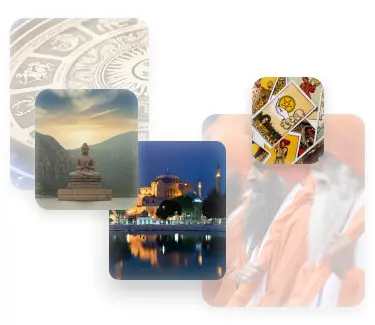Confucianism is widespread in the territory of modern China. Large communities of followers of the teaching live in Korea, Japan and North America.
Confucianism
Confucianism is considered one of the oldest religious teachings and philosophical movements of the East.
Having originated in China, Confucianism rapidly spread throughout Southeast Asia and took a central place among the creeds of the Asian civilization.
There are more than 6.5 million followers.
The teaching originated in the 6th-5th centuries BC.
Confucianism is a widely discussed topic for modern mass media.
The media often publish not only news about what is happening in China, but also discuss the development of Confucianism in the 21st century.
The mass media claim that the modern philosophy of this direction has changed under the influence of Western ideas.
Thinkers are trying to introduce something new at the expense of Confucian philosophy in order to solve the problems of modernity.
Brief history
Confucianism in China arose and began to spread during the reign of the Eastern Zhou Dynasty.
This religious direction is directly connected with the name of Confucius (Kong Fuzi or K’ung-fu-tzu, lit. “Master Kong“), a thinker in ancient China.
During the life of Confucius, complex socio-political processes took place in China: the emperor was gradually losing his power, the local nobility was being forced out by foreign rulers. All this was accompanied by civil strife and disasters.
Confucius did not know how to influence the ongoing changes, therefore, together with his students, he began to wander through the territory of China, thereby spreading his teachings.
Returning to his homeland at the age of 60, Confucius continued to teach his followers.
During the reign of the Han Dynasty, the norms, rules and values of the philosophy of Confucianism became officially recognized in the state.
After the death of Confucius, his disciples founded various trends in Confucianism. By the 3rd century BC, there were eight separate currents.
Post-Neo-Confucianism emerged in the early 20th century. It included Neo-Confucianism, Buddhism, Indian and European belief systems.
Confucianism as the official state ideology in China dominated until 1912.
In the modern People’s Republic of China, Confucianism continues to play one of the leading roles in the system of national philosophy and everyday worldview.
The essence of religion
At the heart of the doctrine is the search for personal and social harmony through the observance of clear moral principles and foundations. Confucius argued that only moral and ethical relations form an ideal state.
Consider the main ideas of Confucianism:
“Ren” – humanity. You need to treat your neighbour with love.
“Li” – ethics. Honor each other.
“Zheng-ming” – correction of names. Peace will reign on earth if everyone behaves in accordance with his position.
“Jun-tzu” – the bearer of virtues. A person can be chaste, only for this he needs a mind.
“Wen” – cultural. People should be drawn to knowledge and not be afraid to ask others for advice.
“Di” – respect. You need to respect elders and treat with respect people more experienced than you.
Zhong is the authority of power. The behavior of people in the state depends on the morality of their ruler.
The commandments
The commandments in the teaching are life lessons formulated by Confucius for his followers. Let ‘s consider their interpretation:
The only thing that matters is movement, not the speed.
Choose people as friends who can become an example for you.
In anger, retire. The consequences may be irreversible.
If it is not possible to achieve the goal, you need to change the methods and means of achieving it.
Hatred is a barrier. Therefore, love your enemy, and you shall win.
A wise person searches for the causes of problems within themselves.
Give yourself completely to your work.
Help only those who ask for it.
Do not stop for small rewards on your way to a bigger goal.
If people discuss you and spit on your back, then your life is more important than theirs.
Rituals
Confucius argued that it is necessary to preserve customs, traditions and rituals aimed at honouring the memory of ancestors.
Here is a look at the funeral and mourning rites:
Funeral is a ritual performed to facilitate the transition of the soul to another world. The ceremony was accompanied by mourning for the deceased. The eldest son performed the ritual of pouring wine. At that moment, he was on his knees and reciting prayers.
The funeral procession was accompanied by shamans, exorcists, mourners and musicians. The chants were aimed at pleasing the soul of the deceased.
The funeral ceremony ended with the lowering of the coffin into the grave. Funeral rites followed.
The family of the deceased dressed in white mourning robes. During the period of mourning, which could last up to three years, people had to give up an idle lifestyle, fatty food, and also come to terms with all the difficulties of life. This was done in order to emphasize the grief that had occurred.
All holiday dates falling on the mourning period were not celebrated.
Holidays
Here’s the list of the main holidays in Confucianism:
Confucius’ birthday. It is celebrated on September 28. On this day, festive ceremonies are held in temples, as well as exhibitions and fairs. The cities are filled with dancing and music.
Lunar New Year. It is celebrated in late January-early February. The holiday is dedicated to the beginning of a new period of life. On this day, it is customary to give gifts and spend time with family. Children are given money in red envelopes. Adults burn their photos. This is done in order to visit the souls of loved ones. Fireworks are launched on the streets, the noise of which scares away spirits.
Qingming. It’s Memorial Day. It is held on April 4-5. The day is dedicated to the memory of the ancestors. On this day, people go to cemeteries, put graves in order, bring gifts to their ancestors, and also burn ritual money.
Holy places
Holy places are connected with the life of Confucius.
Temple of Confucius. This shrine is located in the city of Qufu (the birthplace of Confucius). The foundation date of the temple is 478 BC. The temple is located next to the burial place of the founder of Confucianism. It is of international importance for the followers of this creed.
Confucius’ Cemetery. It is based near the city of Qufu. The cemetery is a complex of burials. Confucius rests in it, as well as all his descendants.
Biographies of the creators
Three personalities are the considered founders of Confucianism:
Confucius is a thinker of ancient China. The philosophy he created became the basis of the daily life of the Chinese.
Since childhood, Confucius had to work hard to help his mother. His father died when the boy was very young.
In his youth, Confucius realized that he needed to take his proper place in society, so he began to self-study.
Eventually he took the post of an official. During the destruction of the Zhou empire, realizing his helplessness in solving this problem, left to wander and spread his ideas of creating an ideal state.
The laity began to call Confucius the “father of the Celestial Empire.”
- Meng-tzu is a follower of Confucius. It is believed that the grandson of Confucius became the teacher of Meng-tzu. Meng-tzu created a treatise in which he emphasized the idea of human perfection.
- Sun Tzu is a Chinese thinker. He criticized the ideas of Meng-tzu, because he believed that human nature is corrupt, and only constant learning, mastering moral principles can help a person develop their virtues. Sun Tzu did not accept other ideologies and religions.
Modern Leaders
A significant figure in modern Confucianism is Du Weiming.
At the moment, he is a representative of American religious philosophy. This thinker preaches the basic ideas of Confucianism.
Du Weiming holds the position of professor at Peking University. He is a research associate at Harvard. He taught in California and the USA.
Engaged in research on the transformation of Confucian philosophy.
The second influential figure is Robert Cummings Neville, an adherent of the philosophy of Confucianism.
Currently holds the position of professor at Boston University. In 1996, he received a doctoral degree from the Institute of the Russian Academy of Sciences.
Scandals
In the 220s BC, Confucianism entered into competition with other well-known schools of thought in China at that time: Legism and Moism.
The representative of the Chinese Qin dynasty adhered to the teachings of the school of legism. He used repression against Confucianism in order to eradicate it.
Philosophers and sages of Confucianism were removed from their posts. Confucian books were burned, and oppositionists were killed.
It was only during the Han Dynasty that Confucianism regained its position, becoming the official religion of the state.



 RU
RU
